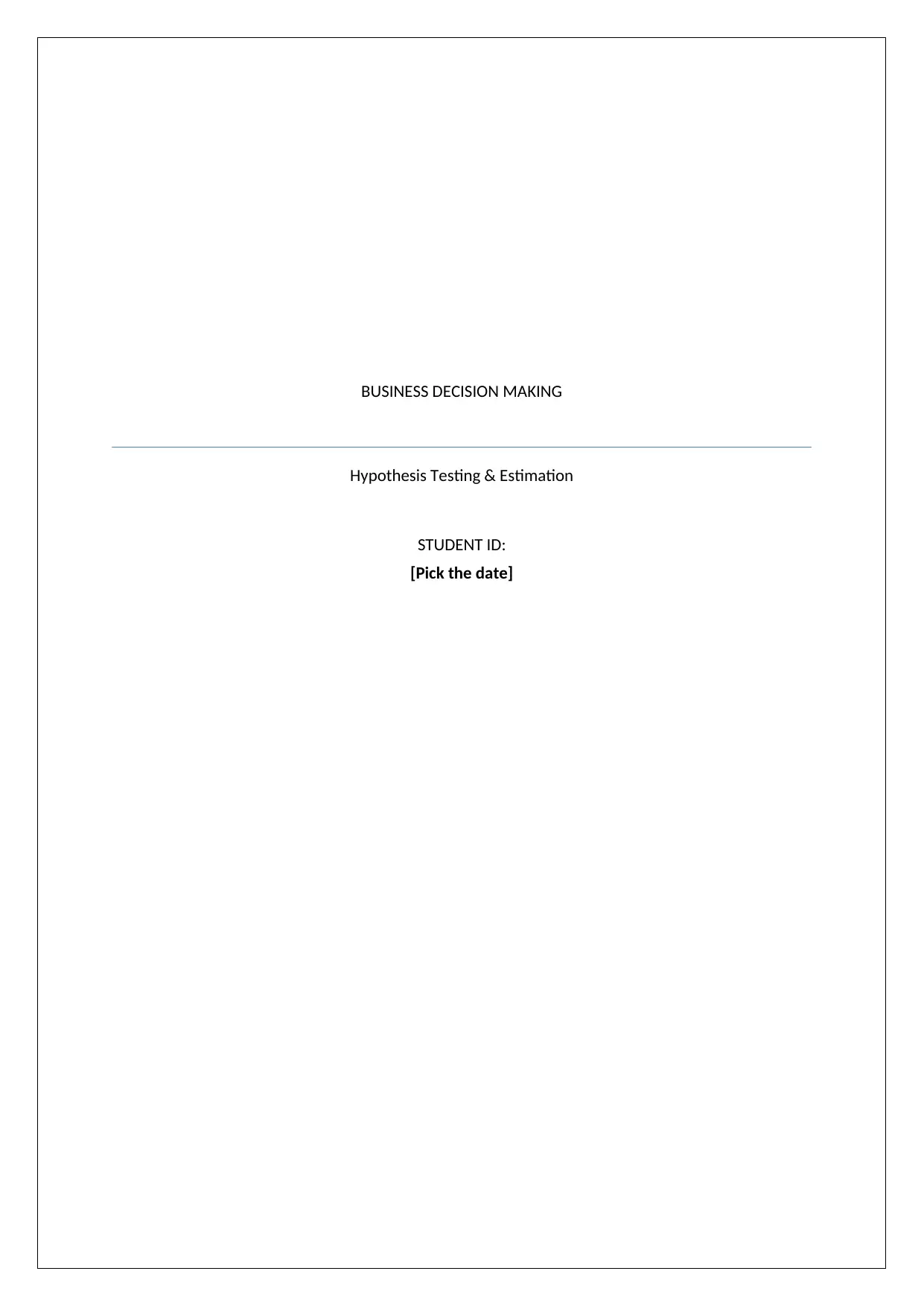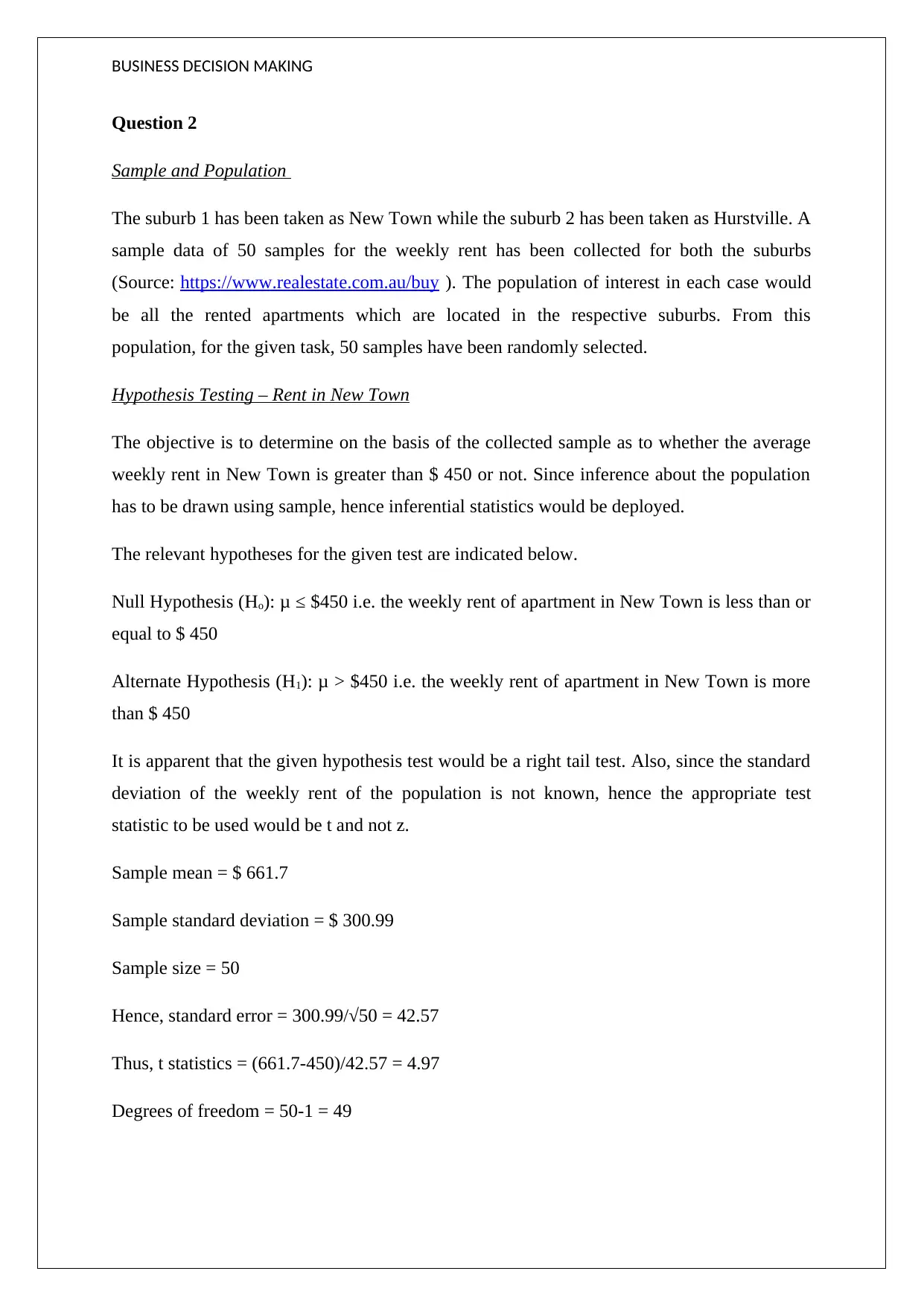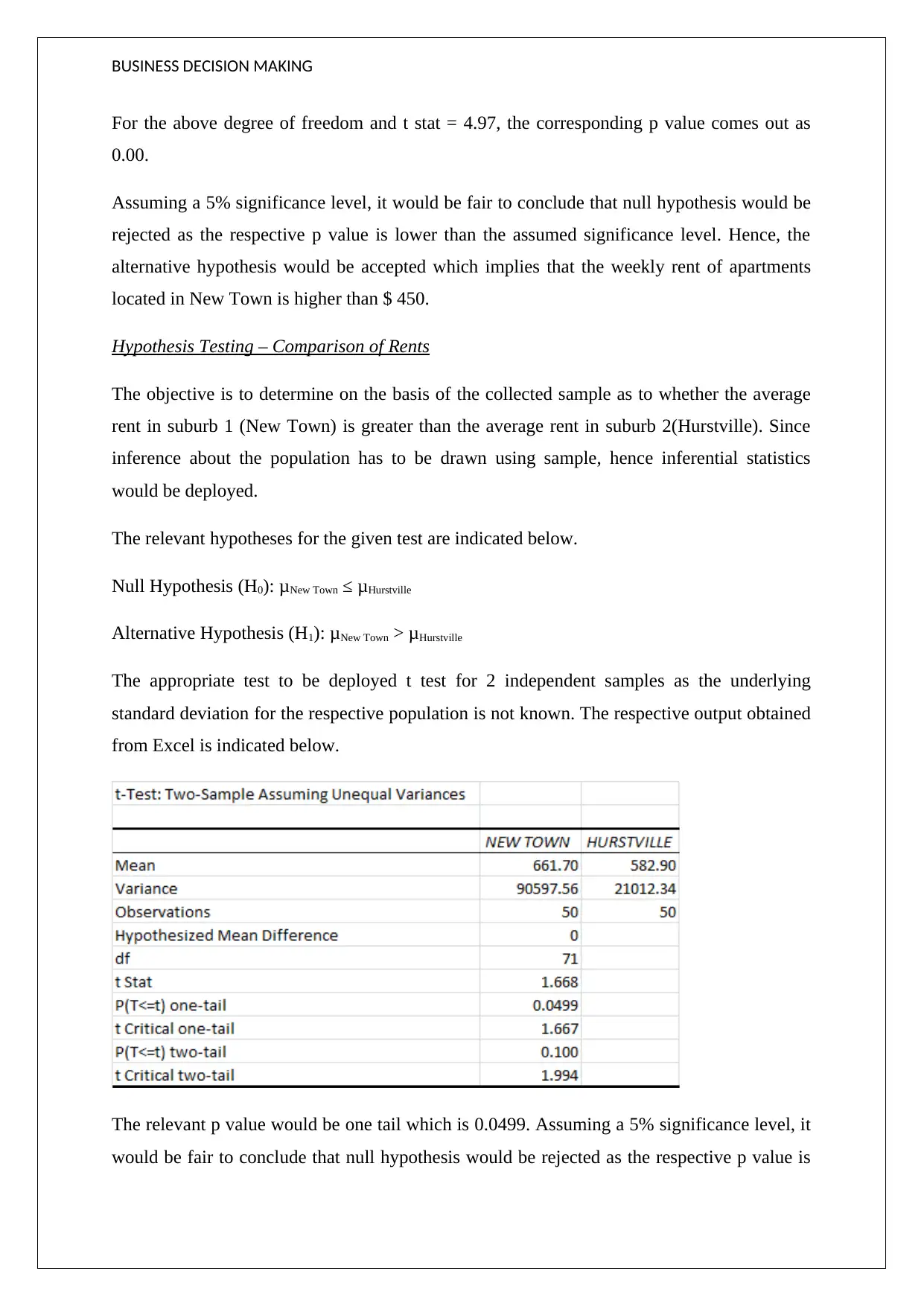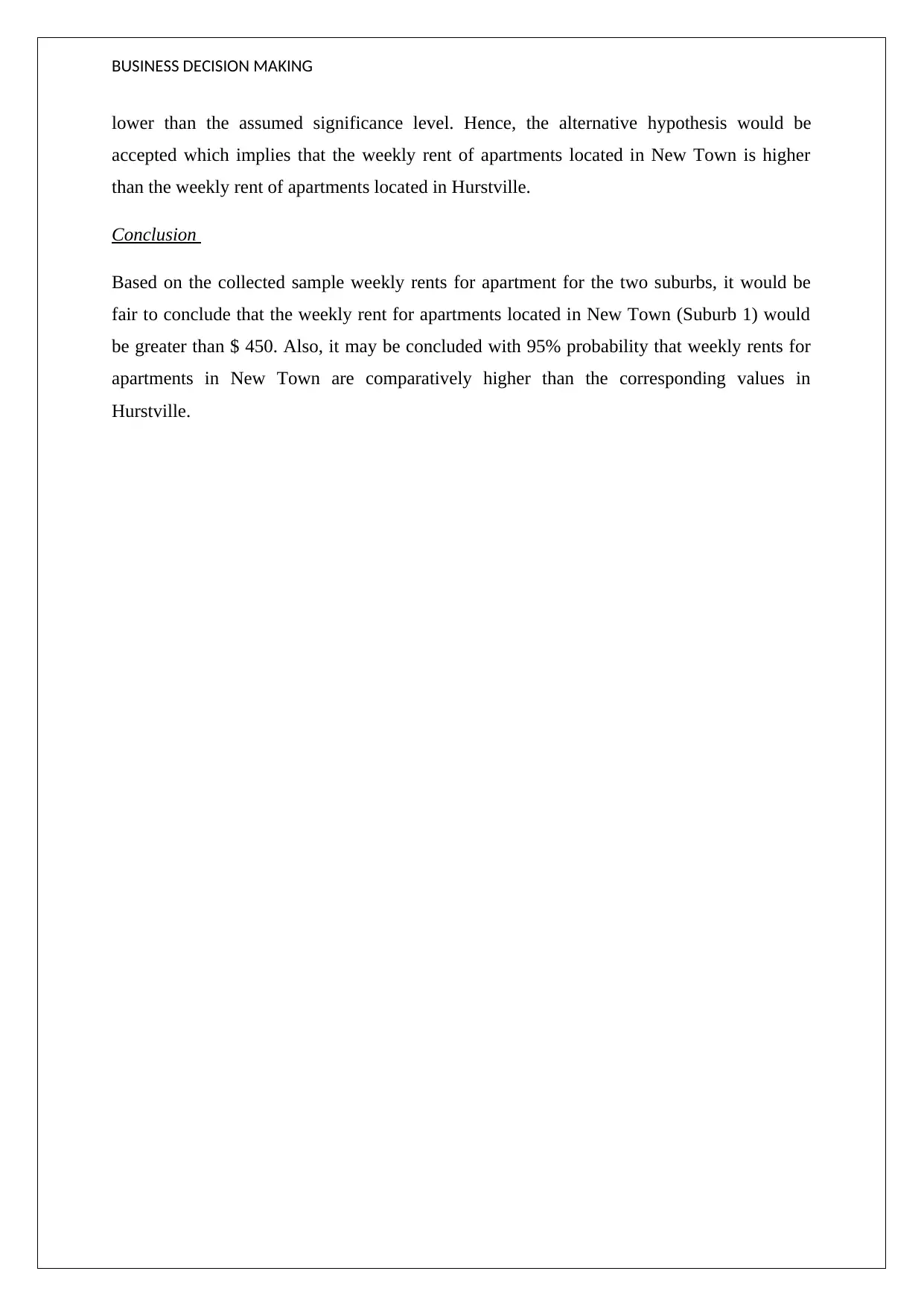BUS101: Business Decision Making - Hypothesis Testing & Rent Analysis
VerifiedAdded on 2020/02/24
|4
|666
|53
Homework Assignment
AI Summary
This assignment solution focuses on business decision-making through hypothesis testing, specifically analyzing weekly apartment rents in two suburbs, New Town and Hurstville. The solution employs inferential statistics to determine if the average weekly rent in New Town is greater than $450 and if the rent in New Town is higher than in Hurstville. The solution uses t-tests, calculates t-statistics, degrees of freedom, and p-values, and interprets the results based on a 5% significance level. The analysis concludes that the weekly rent in New Town is higher than $450 and also higher than in Hurstville, with a 95% probability. The document demonstrates the application of hypothesis testing to real-world business scenarios, providing a clear and concise analysis of the rent data and comparison.
1 out of 4










![Statistics Assignment: Hypothesis Testing Solutions - [University]](/_next/image/?url=https%3A%2F%2Fdesklib.com%2Fmedia%2Fimages%2Fbj%2F2a126809566149e6af44fcc81b2e9526.jpg&w=256&q=75)
![[object Object]](/_next/static/media/star-bottom.7253800d.svg)